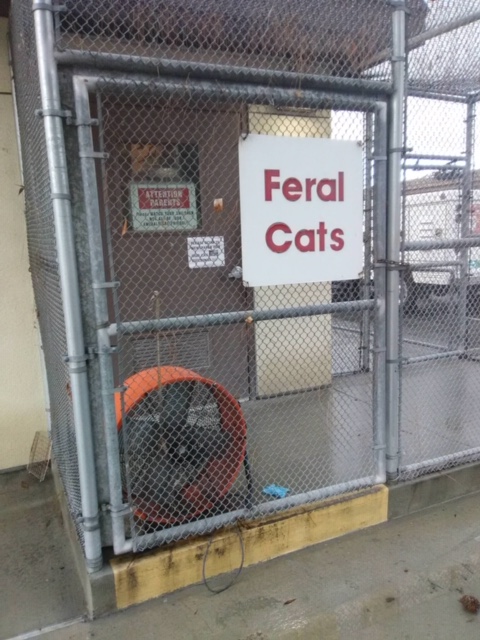
There’s been a request by some national organizations that shelters, rescue groups, and low-cost clinics suspend spay/neuter surgeries during the current crisis. For example, an article in The Association for Animal Welfare Advancement which claims to promote “best practices from industry leaders,” says “Spay and neuter services for the public, shelter pets, and TNR/SNR” are not “essential functions” and should “just stop.” This view is endorsed by the National Animal Control Association, which deemed community cat sterilization “non-essential” (to be fair, NACA also called on shelters/pounds to stop taking in healthy community cats).
The article then goes on to say “Pausing spay/neuter is a gut punch, and it will have consequences – kittens will be born, revenue will fall, staff may be furloughed:” What the article avoids saying, but which should be at the top of the list, is that in some communities — indeed probably most communities — animals will die. To the extent a community will continue to take in and kill “feral” animals, they have an obligation to implement alternatives to the killing. In other words, if taking in and killing “feral” or community cats is deemed “essential” and still occurring (or will occur when shelters reopen), TNR should also be. But more to the point, there are many creative ways that shelters can continue to meet their mandates to provide humane, life-affirming care, including TNR, even while they safeguard human health. As I’ve written before:
- Shelters could ask residents to shelter strays they find at their home.
- Shelters could release animals without sterilization quickly using “foster to adopt” agreements so that the animals are still in the constructive custody of the shelter, but living in their new home, and then can be sterilized before the adoption is finalized.
- They could implement online and virtual adoptions and drive thru’ fostering and adoption.
- And so much more.
This same sort of flexibility and ingenuity can also be directed at continuing to provide TNR/SNR as well. How?
In New York, for instance, Governor Andrew M. Cuomo early on deemed animal shelters an “essential service”. Recently, he added “animal care” as well, an expansion of what constitutes “essential”. At shelters, staff is presumably continuing to provide and/or coordinate veterinary care for animals in need. TNR should continue to part of such care if animals face risk of death. Large, one-off spay/neuter clinics that bring together large numbers of people could, for the time being, be replaced with a more strategic approach, all by minimizing and even eliminating one-on-one contact with the public, including using telephone or electronic communication, procurement of (sanitized) traps without physical contact between staff and public, trapping at night where social distancing guidelines will not be jeopardized, non-contact prearranged drop off and pick up, or return of cats to the field by trained staff. Because such clinics are medical facilities, they would already be in possession of proper protective gear, such as gloves, to safely handle cats and traps without placing any staff at risk (even the article noted that acquisition of protective gear is “a minor consideration”).
In others words, the same creativity and flexibility that has allowed the sheltering industry to dramatically reduce killing over the last decade and a half by embracing new and innovative ways of operating, can now be directed at solving this present, unanticipated crisis with similar determination. No breach of social distancing guidelines need occur for “feral” animals to be sterilized and released, rather than killed, during these troubling times.
Nationwide, state and county officials are rising to the challenge presented by this unique moment in our nation’s history to meet their obligations to public health and safety with thoughtful, out-of-the-box thinking. Why? Because what this moment demands is not defeatism, but resolve. Likewise, rather than encouraging shelters to abandon core programs, and with them, their very mission, the agencies and “authorities” which animal shelters turn to for guidance should likewise be offering similar strategies and similar determination to face down this unprecedented crisis. In the absence of such leadership, the grassroots must once again rise to the occasion and grant itself the permission, and authority, to find a better way.
The sole reason given in the article for suspending TNR is our obligation to “flatten the curve” by social distancing and quarantining in place (where possible). But, as a society, we have other obligations as well — obligations that cannot be put on hold and that can be initiated in a way that reduces risks for humans, too. We have a debt and a duty whose failure to meet will result in death to animals.
As philosopher David Pearce writes, “Over the last century, a welfare state for humans was introduced in Western European societies so that the most vulnerable members of our own species wouldn’t suffer avoidable hardship.” “The problem,” as he notes, “is not just that existing welfare provision is inadequate: it’s also arbitrarily species-specific. In common with the plight of vulnerable humans before its introduction, the welfare of vulnerable non-human animals depends mostly on private charity. No universal guarantees of non-human well-being exist.” They should. And morally, they do. This shared crisis should not be an automatic death sentence for “feral”/community animals.
————-
Have a comment? Join the discussion by clicking here.